To ease menstrual discomfort, try herbal tea blends that combine chamomile, ginger, and peppermint. Chamomile relaxes muscles and eases cramps, while ginger reduces inflammation and alleviates pain. Peppermint acts as a soothing agent for headaches and further relaxes your uterine muscles. A recommended blend could consist of 50% chamomile, 30% ginger, and 20% peppermint. You can tweak the ratios based on what feels best for you. Steep your mix for 5-10 minutes to bring out the ideal flavors and benefits. If you're curious about preparing your own personalized blend, there's more you can explore.
Understanding Menstrual Discomfort
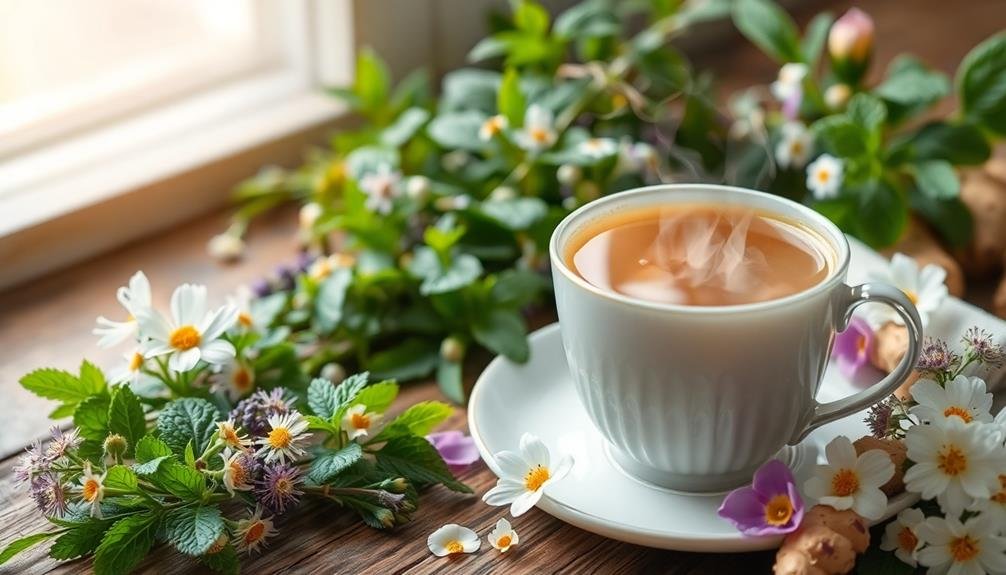
Experiencing menstrual discomfort can be a frustrating aspect of many people's lives. It often manifests as cramps, bloating, and mood swings, making it challenging to carry on with daily activities. You might find that these symptoms vary in intensity and duration from month to month, leaving you unsure of what to expect.
The discomfort usually stems from hormonal fluctuations, specifically involving prostaglandins, which trigger the contractions of the uterus. These contractions can lead to that painful cramping sensation you're all too familiar with.
In addition to cramps, you might also experience headaches, fatigue, and digestive changes, all of which can further complicate your experience.
Understanding your body's responses during this time is essential. You may notice patterns that correlate with your cycle, helping you prepare for when discomfort is likely to strike.
Keeping track of your symptoms can provide valuable insights into what triggers your discomfort and what relief methods may work best for you. Knowing what to expect can empower you to manage your menstrual discomfort more effectively, allowing you to navigate your days with a little more ease.
Key Herbs for Relief
Finding relief from menstrual discomfort can often be aided by the use of specific herbs known for their soothing properties. Incorporating these herbs into your herbal tea blends can make a significant difference in how you feel during your cycle.
Here are three key herbs to examine:
- Chamomile: This gentle herb is famous for its calming effects. It helps relax the muscles and can reduce cramping, making your period a little more bearable.
- Ginger: Known for its anti-inflammatory properties, ginger can help alleviate pain and reduce nausea. Sipping on ginger tea can warm your body and ease discomfort, offering a comforting sensation.
- Peppermint: With its invigorating flavor, peppermint tea not only helps soothe headaches but also relaxes the muscles of the uterus. This can lead to a reduction in cramps and overall discomfort during your period.
Blending Techniques for Tea

Creating your own herbal tea blends can be a rewarding way to enhance relief from menstrual discomfort. To get started, gather your selected herbs based on their benefits. Popular choices include chamomile, ginger, and peppermint, each known for their soothing properties.
Once you've chosen your herbs, consider their flavor profiles. You want a blend that's not only effective but also enjoyable to drink.
Next, experiment with different steeping techniques. Use fresh herbs for a more vibrant taste, or try dried herbs for convenience. If you're using dried herbs, crush them slightly to release their essential oils.
When you're ready to steep, use boiling water, but let it cool for a minute to avoid scorching delicate herbs. You can also play with steeping times; longer steeping can intensify flavors and benefits. Start with 5-10 minutes and adjust based on your preference.
Don't forget to taste as you go! To balance flavors, you might add a hint of honey or lemon. Finally, keep a record of your blends so you can refine your recipes over time, creating the perfect cup tailored just for you. Enjoy the process of blending!
Recommended Herbal Tea Ratios
When it comes to crafting the perfect herbal tea blend for menstrual discomfort, balancing the ratios of your chosen herbs is key. Getting the proportions right can enhance the soothing effects you're looking for and help alleviate those pesky cramps.
Here are some recommended ratios to take into account:
- Chamomile (50%): This herb is known for its calming properties, making it an excellent base for your blend. It can help ease muscle tension and promote relaxation.
- Ginger (30%): Adding ginger brings a warming effect and can help reduce inflammation. Its spicy kick not only boosts flavor but also works wonders for nausea.
- Peppermint (20%): Incorporating peppermint can provide a revitalizing taste while offering relief from headaches and digestive discomfort often associated with menstruation.
Play around with these ratios to find what works best for you.
Preparing Your Herbal Blend
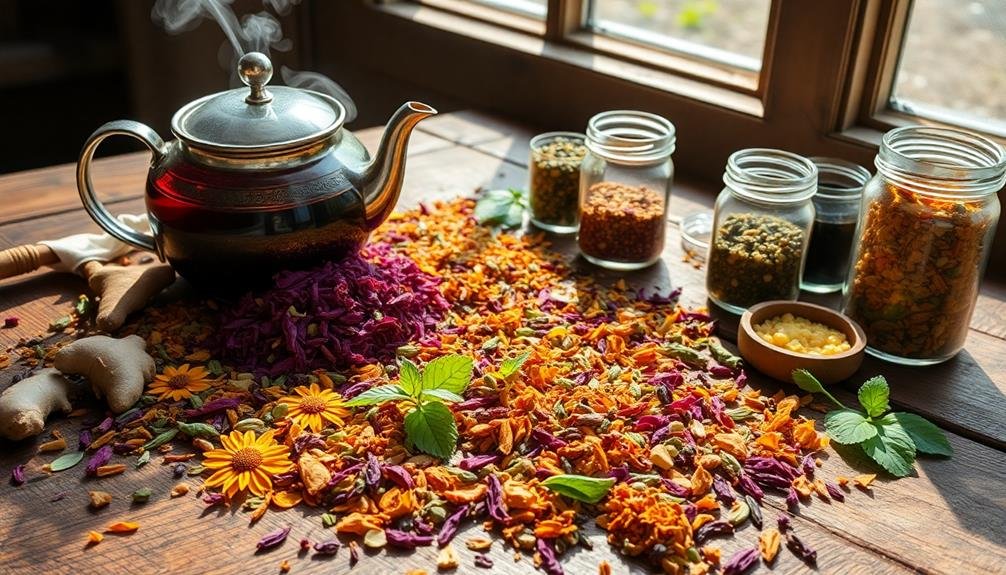
Preparing your herbal blend is a straightforward process that can be both enjoyable and rewarding. First, gather your chosen herbs based on the ratios you've decided on. Common options include chamomile for relaxation, ginger for its anti-inflammatory properties, and peppermint for soothing cramping.
Next, measure out the dried herbs using a kitchen scale or measuring spoons. A typical ratio is one tablespoon of your herbal mix per cup of water. Combine the herbs in a bowl, mixing them thoroughly to guarantee an even distribution of flavors and benefits.
Once your blend is ready, it's time to brew. Boil water and pour it over your herbal mix in a teapot or infuser. Let it steep for about 5 to 10 minutes, depending on how strong you want the flavor. You can adjust this time based on your taste preference.
Frequently Asked Questions
Can I Use Herbal Teas Alongside Pain Medication?
You can definitely use herbal teas alongside pain medication, but it's wise to consult your healthcare provider first. They can guarantee there are no interactions and help you find the best options for relief.
Are There Any Side Effects of Herbal Tea Blends?
Herbal tea blends can cause side effects like allergies, stomach upset, or interactions with medications. You should monitor how your body reacts and consult a healthcare professional if you experience any adverse effects. Stay informed!
How Long Should I Steep My Herbal Tea?
You should steep your herbal tea for about 5 to 10 minutes, depending on the blend. Experiment a bit to find your perfect flavor and strength, adjusting steeping time to suit your taste preferences.
Can I Cold Brew Herbal Teas for Menstrual Discomfort?
Absolutely, you can cold brew herbal teas for menstrual discomfort! Simply steep your chosen herbs in cold water for several hours. This method extracts flavors gently, providing soothing benefits without the bitterness of hot brewing. Enjoy!
What Are the Best Times to Drink These Herbal Teas?
You should drink herbal teas whenever you feel discomfort or cramping. Sipping them in the morning can set a calming tone, while enjoying a cup before bed helps you relax and promotes restful sleep.
In Summary
Incorporating herbal tea blends into your routine can be a soothing way to ease menstrual discomfort. By understanding the key herbs and experimenting with different ratios, you can create a personalized blend that works best for you. Remember to prepare your tea with care, allowing the flavors and benefits to shine. So, the next time you face menstrual discomfort, reach for your herbal blend and savor the relief it offers. Your body will thank you!

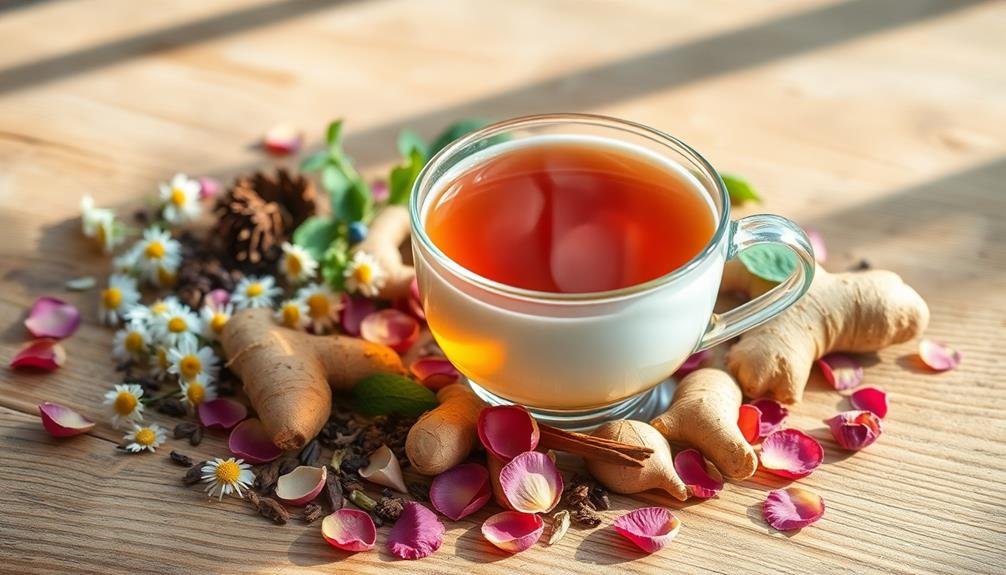
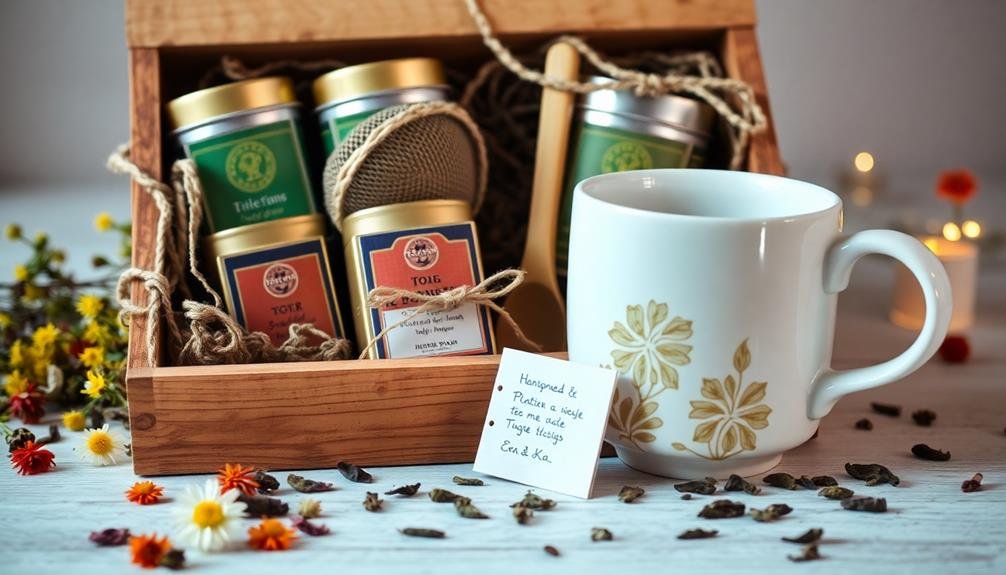
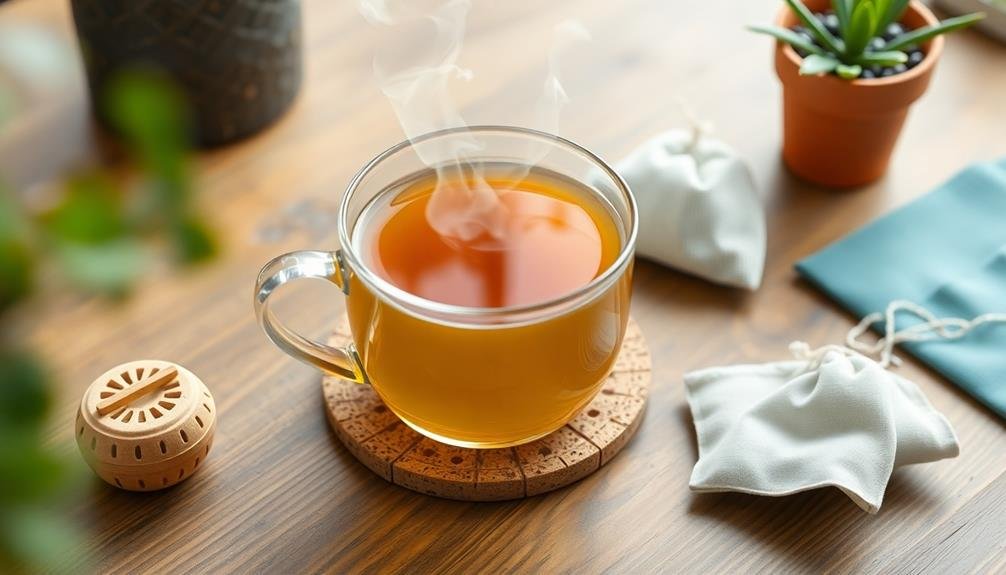

Leave a Reply